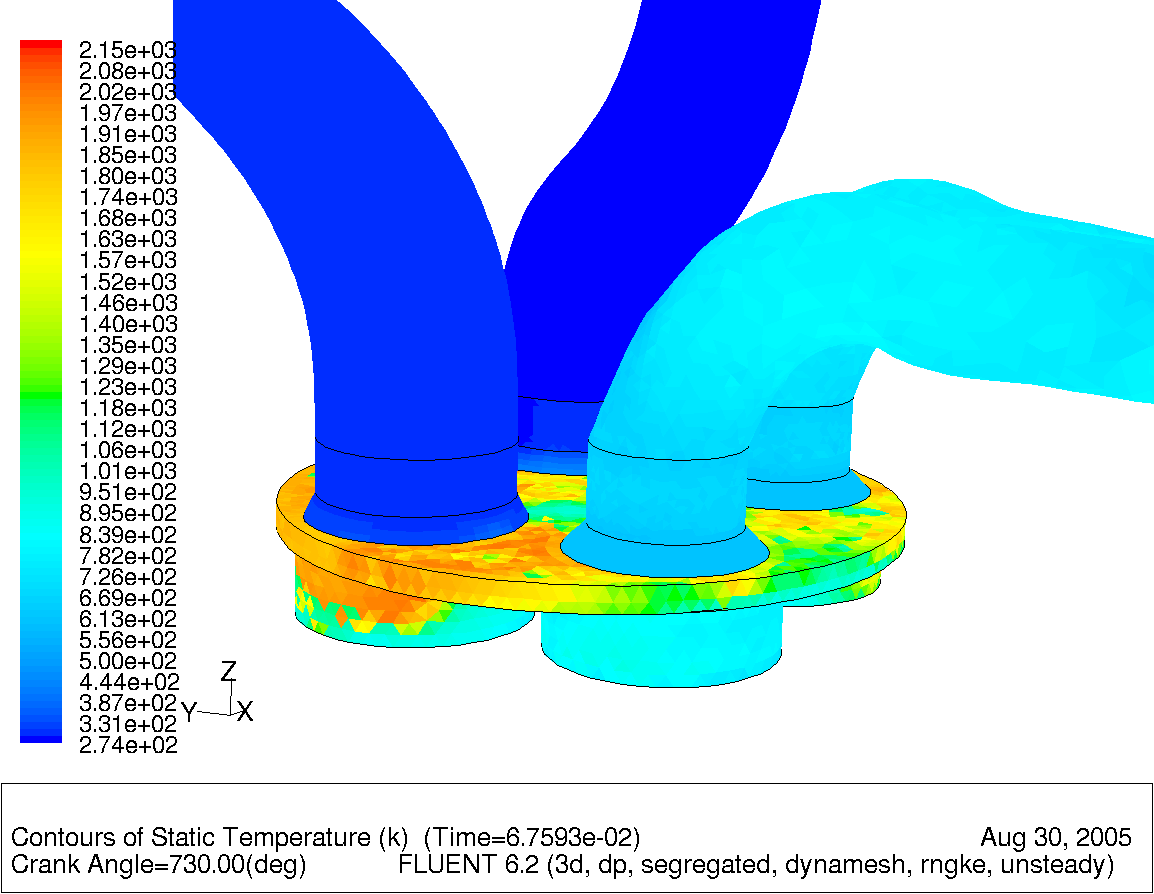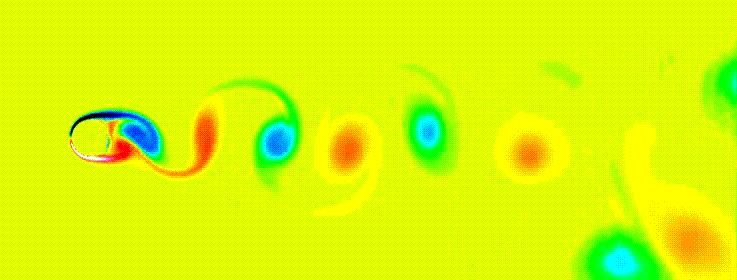We are interested in developing combustion and ignition models for a range
of internal combustion engines. In the past our research efforts were
mostly focused on diesel engines, as they have been shown to have higher
efficiencies than gasoline engines. However, in recent years we have
focused on developing models for Homogeneous-Charge Compression Ignition
(HCCI) engines because they have been shown to have higher thermal
efficiencies and lower NOx and soot emissions than Spark Ignition (SI)
engines. While a promising technology, HCCI engines experience high levels
of carbon monoxide (CO) and unburnt hydrocarbon (UHC) emissions. These
pollutants are formed in regions of the cylinder where wall heat loss is
significant and are strongly impacted by the auto-ignition and combustion
process. Improving CO and UHC emissions in HCCI engines requires a
fundamental understanding of the interactions of chemical kinetics,
fuel/air/EGR mixing, heat loss, and transport between near wall and
cylinder core regions. Therefore, we have developed a ignition and
combustion model based on detailed chemical kinetics for HCCI engines. The
model considers inhomogeneities in both local equivalence ratio as well as
local enthalpy distribution. These inhomogeneities might be caused by
incomplete mixing and wall heat losses, respectively. The basis of the
model is the solution of scalar equations in a two-dimensional mixture
fraction/enthalpy space. The proper coupling with an engine simulation is
ensured by the solution of the Reynolds averaged mixture fraction and
normalized enthalpy equations.
We have conducted several validation studies of the model will. First, we
applied the model to a Rapid Compression Machine operated under HCCI
conditions with fully homogeneous fuel/air ratio, but strong variations in
local temperature. Results are compared to experimental data from Murase
and Hanada (2002). The simulations correctly predict ignition timing
trends as a function of initial mixture temperature. Additionally, the
effect of modeled transport across enthalpies on the ignition
characteristics were quantified and the importance of this effect was
demonstrated in comparison with a multi-zone model.
To gain a more fundamental understanding of the underlying physics of
auto-ignition in systems with initial temperature fluctuations but
initially homogeneous mixture composition, we also applied our model to
the
Direct Numerical Simulations (DNS) of Hawkes et al. (2005). Simulations
using the model show substantial improvement over multi-zone modeling also
performed by Hawkes et al. (2005).
Most recently, we applied the model in a fully coupled CFD simulation to
an
experimental HCCI configuration with inhomogeneities in both enthalpy and
mixture composition. The test case is a laboratory 4-stroke HCCI engine.
Experiments for this engine have been conducted by Bosch RTC. Numerical
results have been compared against experimental data. Our current
research
efforts are focused on improving our models to provide accurate
predictions
of pollutant emissions for HCCI engines.
Simulation of Temperature Contours in an HCCI Engine
(Provided by David Cook)
Unsteady flow around a circular cylinder
Click image to see animation.
Unsteady flow around a circular cylinder for a Reynolds number of 333 showing the von Karman vortex street.
(Provided by Prahallad Iyengar)

